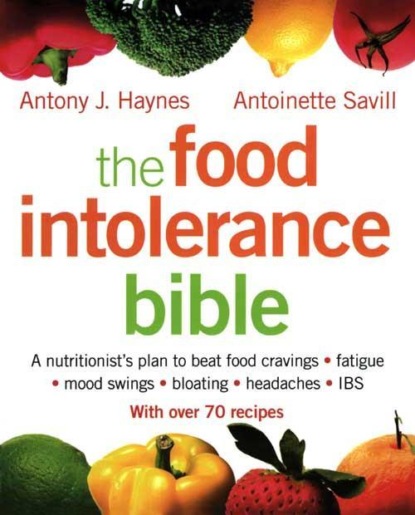По всем вопросам обращайтесь на: info@litportal.ru
(©) 2003-2024.
✖
The Food Intolerance Bible: A nutritionist's plan to beat food cravings, fatigue, mood swings, bloating, headaches and IBS
Автор
Год написания книги
2019
Настройки чтения
Размер шрифта
Высота строк
Поля
Just because you experience symptoms after eating foods that contain gluten, this does not mean you have coeliac disease. The definitive test is a biopsy from the surface of the small intestine.
A flexible telescope (endoscope) is usually passed through the mouth into the stomach and upper intestine so that the lining can be inspected and a biopsy taken. This process takes only a few minutes and is often made easier and less uncomfortable by giving the patient a mild sedative beforehand. Alternatively, a biopsy can be obtained by swallowing a special capsule on the end of a narrow tube.
If the biopsy is abnormal, a second test may be advised after a period to check that the intestinal surface has returned to normal.
When there is doubt about an earlier diagnosis, or the changes seen on biopsy are uncertain, another biopsy may be advised after a person has deliberately eaten gluten for a period (this is called a ‘gluten challenge’).
Blood tests are helpful in detecting the body’s reaction (antibodies) to gluten or as an indication of intestinal damage. The blood test that can give a strong indication of coeliac disease analyses tissue transglutaminase IgA levels along with reticulin and endomysial IgA antibodies. A positive result in this test also gives an indication of an inherited susceptibility to gluten intolerance. Other blood tests can be used to identify deficiencies of iron, vitamins such as folic acid, or minerals such as calcium. Such blood tests are useful for screening relatives or to ascertain whether a gluten sensitivity may be the cause of symptoms or of nutrient deficiency. These tests do not make the diagnosis, but indicate the advisability of a biopsy test.
If abdominal symptoms are troublesome or develop despite treatment, a barium X-ray of the intestine, which involves swallowing a tasteless white liquid, may be advised.
For more information about coeliac disease, please contact:
Coeliac Society of the UK
PO Box 220
High Wycombe, Buckinghamshire
HP11 2HY
Tel: 01494 437 278
www.digestivedisorders.org.uk
Case Study: Digestion Is the Issue
Sarah Davies, 41, visited me in the summer a few years ago. She had been suffering from abdominal bloating and headaches for years. She was slim, which meant that whenever the bloating occurred, it was all the more obvious – this prevented her from going out in warm weather, it affected her so much. She found that eating most types of carbohydrates such as bread, pasta or potatoes triggered both the bloating and the headaches.
I recommended Sarah avoid the obvious culprit foods, which had the desired effect on her bloating and headaches. Trouble was, it meant that when she went out – and she had a very busy social life – she felt awkward not being able to eat those foods. Sarah also fulfilled the requirements for needing digestive enzymes. When she took these before and with food she could eat the culprit foods, once a day anyway, and get away with it both in terms of the bloating and the headaches. Needless to say, this transformed her life since she could now go out and not worry about what she ate.
Maldigestion
A lack of hydrochloric acid and pancreatic enzymes is a very common problem. If you cannot digest foods properly then there is an increased risk of food proteins crossing the intestinal lining, as well as an increased risk of intestinal permeability and transit time of food through the gastro-intestinal tract.
In addition to maldigestion, the lack of stomach acid can also represent a risk for the presence and survival of unwanted bacteria, yeast and parasites (more about this in later chapters).
Hydrochloric Acid (HCI)
HCI is the most acidic juice humans produce. Its main functions include:
HCI secretion assists protein digestion by activating pepsinogen and turning it into pepsin
HCI sterilizes the stomach against ingested pathogens (harmful bacteria, etc.)
HCI prevents bacteria, yeast and fungi from growing in the small intestine
HCI encourages the flow of bile
HCI encourages the flow of pancreatic enzymes
HCI facilitates the absorption of folic acid, vitamin B12, vitamins A and E, ascorbic acid, beta-carotene, non-heme iron and some forms of calcium, magnesium and zinc.
Your body makes about 2 litres of gastric juices a day. In turn, the parietal cells produce HCI acid. HCI is produced in minimal amounts when you are not eating, at about 10 per cent of maximal rate. The pH on an empty stomach should normally be about 1.8–2.0.
HOW DOES A LOW LEVEL OF STOMACH ACID AFFECT ME?
Low levels of stomach acid can lead to maldigestion of proteins, fats and carbohydrates. Low HCI levels can lead to symptoms of indigestion: burping, abdominal bloating and excessive intestinal wind. It can lead to increased bacterial overgrowth in the small intestine as well as an increase in intestinal permeability (or leaky gut). Low HCI can also lead to the malabsorption of nutrients.
You should also be aware that the more protein you eat, the more HCI acid you need.
A COMMON PROBLEM
Low HCI levels are very common. The older you are, the more likely you are to have low levels. About 30 per cent of the population over the age of 65 will be low in stomach acid (a condition known as hypochlorhydria).
There are a number of factors at work here, including stress and age. However, another is nutrient deficiency. Low levels of the mineral zinc and vitamins B1 and B6 can also play their part. Deficiencies in zinc and B vitamins are extremely common and are caused by not eating enough of the foods plentiful in these nutrients, to chronic stress (which increases our need for these nutrients) or to depleted levels caused by alcohol consumption or smoking.
Вы ознакомились с фрагментом книги.
Приобретайте полный текст книги у нашего партнера:
Приобретайте полный текст книги у нашего партнера:







